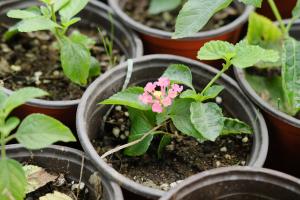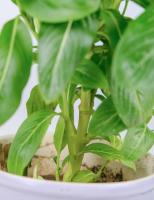Introduction
Fig trees are delicious and fruity trees that can provide ample shade and add beauty to a garden or landscape. They require a bit of attention and care to thrive, but once they become established, they can provide a bounty of fresh fruit for years to come. Finding the best place to plant fig trees is crucial for their growth and health. In this article, we will explore some of the best places to plant fig trees to ensure they grow and produce delicious fruit.
Climate
Fig trees require specific climates to grow and produce fruit. They can thrive in hot and dry climates, but they also require a certain amount of rainfall. The best places to plant fig trees are in areas with mild to warm temperatures that have long, hot summers and mild winters. Coastal regions are ideal for fig trees due to their moderate temperatures, humidity, and adequate rainfall. However, fig trees may not do well in areas with harsh winter climates, as extreme cold temperatures can damage the trees.
Soil Type
The soil type is another crucial factor to consider when planting fig trees. Fig trees require well-draining soil that is rich in organic matter. They will not thrive in soils that are too wet or too dry. The ideal soil pH for fig trees is between 6.0 and 6.5. Soil that is too acidic or alkaline can negatively affect tree growth and fruit production. It is also important to note that fig trees require regular fertilization to maintain healthy growth and fruit production.
Sunlight and Shade
Fig trees require plenty of sunlight to thrive and produce fruit. They should be planted in an area that receives at least 8 hours of direct sunlight per day. However, fig trees also require some shade during the hottest part of the day, especially in hotter climates. Planting fig trees in a location that receives partial shade during the hottest part of the day can help prevent the trees from becoming stressed and reduce water loss due to transpiration.
Proximity to Other Trees
Fig trees should be planted at least 10 to 20 feet away from other trees, as they require space to grow and establish a strong root system. Trees that are too close to one another can compete for nutrients, water, and sunlight, which can negatively affect fig tree growth and production. Additionally, other trees can create a shaded environment that may not be conducive to fig tree growth and fruit production.
Conclusion
Fig trees are a great addition to any garden or landscape, but finding the best place to plant them is essential for their growth and fruit production. When planting fig trees, consider the climate, soil type, sunlight and shade, and proximity to other trees. Ensuring that fig trees are planted in optimal locations can help them thrive and produce delicious fruit for years to come.

 how many times do yo...
how many times do yo... how many planted tre...
how many planted tre... how many pine trees ...
how many pine trees ... how many pecan trees...
how many pecan trees... how many plants comp...
how many plants comp... how many plants can ...
how many plants can ... how many plants and ...
how many plants and ... how many pepper plan...
how many pepper plan...






























